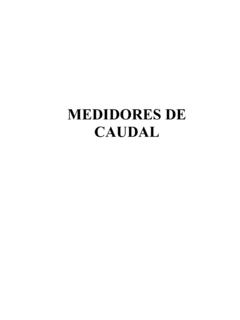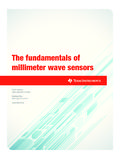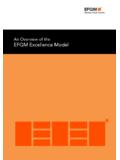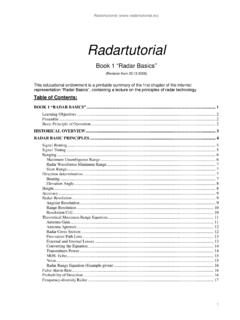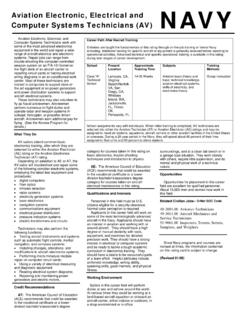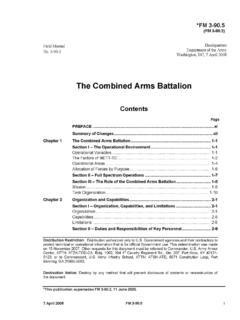Transcription of GR/PRINTO Fundamentals of Ultrasonic- flow …
1 KROHNE 04/2001 GR/PRINTO . Fundamentals of ultrasonic - flow measurement for industrial applications Friedrich Hofmann KROHNE Messtechnik GmbH & Co. KG. Duisburg, 2000. Contents Page 1 Summary 3. 2 Acoustic properties of liquids and gases 4. 3 ultrasonic Doppler flowmeters 5. The principle 5. Advantages of the ultrasonic Doppler flowmeter 6. Drawbacks and limitations of the ultrasonic Doppler flowmeter 6. Application fields for ultrasonic Doppler flow measurement 6. 4 ultrasonic flowmeters operating by the transit-time differential method, measuring principle 7. Basically quite simple 7. Measuring principle 7. 5 Types of ultrasonic flowmeters operating by the transit-time differential method 11.
2 Clamp-on flowmeters 11. In-line ultrasonic flowmeters for liquids, by the transit-time differential method 13. In-line ultrasonic flowmeters for gases, by the transit-time differential method 17. 6 Weldable sensor assemblies 20. 7 ultrasonic volumetric meter ALTOSONIC V for custody transfer 21. Terms of reference 21. 5 measuring paths in the ALTOSONIC V 22. Approvals, tests 24. ultrasonic volumetric meter for custody transfer in a multi-product pipeline 24. 8 Practice-proven: ultrasonic flow measurement technology 25. 9 ultrasonic flowmeters by the transit-time differential method, current limits of application 28. 10 List of illustrations 29.
3 2 Grundlagen der Ultraschall-Durchflussmessung 1. Summary ultrasonic flowmeters have been used in industry for over 20 years for the volumetric flowmetering of liquids, gases and - more recently - steam. Basically, the distinction is made between two methods: Frequencies occurring in nature ultrasonic flowmeters 18 kHz Man 25 kHz Dog 50 kHz Butterfly 100 kHz Whale GFM 700 for gases 175 kHz Brat UFM 500 for liquids: Fig. 1: 1 MHz larger DN sizes Sound frequencies 2 MHz UFM DN 500 for liquids: in nature and in smaller DN sizes ultrasonic flow measurement The Doppler process In order to work, this method needs reflectors in the process product.
4 Due to malfunction- ing, incorrect application and, as a result, a feeling of uncertainty, it gave ultrasonic flow measurement a bad name in the 1970s. It is now used only in a few special applications. The transit-time differential method This method has been working successfully in industrial applications for more than 20 years. It is accurate and reliable. Besides measuring the volumetric flow rate, the method provides information on the type of liquid product based on the sound velocity that is measured in parallel. ultrasonic flow measurement by the transit-time differential method is now one of the most universally applied flowmetering processes.
5 It is used for measuring cryogenic gases from -200 C, and hot liquids, gases and steam up to 500 C and above, and pressures up to 1500 bar, also for custody transfer applications for liquids other than water. Special versions are approved for custody transfer for volumetric gas meters (from domestic up to large-size meters), as volumetric measuring units for measurement of thermal energy and even for liquids, other than water, with accuracy specifications below of the measured value. In addition, special versions are available as volumetric measuring units for domestic calorimetric meters or as domestic gas meters. These are not discussed here.
6 Fundamentals of ultrasonic flow measurement 3. 2. Acoustic properties of liquids and gases Ultrasound is sound with frequencies above the limit audible to man (typically 18 kHz). Fig. 1 shows sound frequencies occurring in nature and those used for ultrasonic flow- metering. Sound waves propagate at the velocity of sound c. Fig. 2 shows the velocities of sound in various materials. Gases Air 330 m/s Chlorine 210 m/s Methane 430 m/s Hydrogen 1280 m/s Liquids Water 1480 m/s Methanol 1100 m/s Kerosine 1320 m/s Glycerine 1900 m/s Fig. 2: Solids Velocity of sound c Steel 5900 m/s 3200 m/s in various media Steel 5600 m/s 3200 m/s (at standard Berylium 12900 m/s 8900 m/s conditions).
7 For sound waves to propagate, if possible in the undamped state, ultrasonic flowmeters for liquids operate with sound frequencies in the "Megahertz". range, ultrasonic flowmeters for gases operate with sound frequencies in the "100 Kilohertz" range. 4 Fundamentals of ultrasonic flow measurement 3. ultrasonic Doppler flowmeters The principle Doppler flowmeters operate similarly to the radar speed traps used on the road. An emitter sends ultrasonic waves at frequency f1 (approx. 1 - 5 MHz) at angle a into the flowing product. The ultrasonic waves strike particles moving through the sound field at velocity vP. The wavelength of the emitted wave at frequency f1 amounts to: 1 = c / f1.
8 Due to its rate of motion vP, the particle moving away from the emitter sees' the wavelength: Due to its rate of motion vP, the particle moving away from the emitter sees' the wavelength: P = (c v P cos ) / f1. Emitter Receiver f2. f1. Vp Fig. 3: Reflecting solid particles Principle of the Doppler flowmeter In turn, the receiver now sees' the reflected frequency out of line because the reflecting particle is moving further away all the time, and the wavelength changes as follows: Hence: 2 = (c 2 vP cos ) / f 1. For vP c we obtain: f1 c f2 =. c 2 vP cos . This difference in frequency is therefore a linear measure of the rate of motion of the particles.
9 2 vP f 1 cos . f2 f1 = f = c Fundamentals of ultrasonic flow measurement 5. 3. Advantages of the ultrasonic Doppler flowmeter easy to install on existing pipelines (clamp-on versions). non-invasive, no moving parts, no wear Drawbacks and limitations of the ultrasonic Doppler flowmeter The measuring method needs a sufficient number of reflecting particles in the medium on a continuous basis. The particles must be large enough to provide sufficiently good reflections (> /4). The sound velocity of the particulate material must be distinctly different from that of the liquid. The sound velocity of the medium is directly included in the measurement result.
10 The particle velocity often differs noticeably from the velocity of the liquid. Usually, the ultrasonic field extends only into the peripheral flow. That is why indication is heavily dependent on the flow profile. The velocity needs to be far higher than the critical velocity at which particles settle. Very long unimpeded inlet runs (20 x D) are needed to allow conclusions to be drawn from the flow rate. Application fields for ultrasonic Doppler flow measurement Medical applications ( measurement of the blood flow). Absolute accuracy is not a requirement. Only good dynamic performance is required which reproduces blood pulsation in the veins and arteries in great detail for diagnosis (similar to an ECG).

